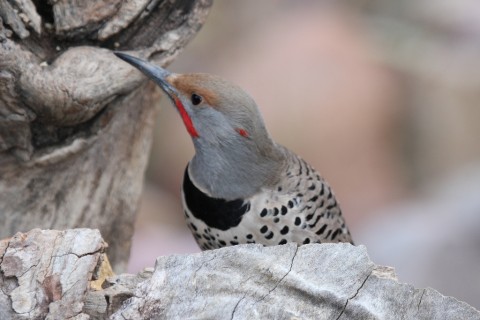
Northern flickers nest in dead or diseased tree trunks or large branches. Dominic Sherony photo.
You probably know that “snags” or dead and dying trees are valuable for birds and other wildlife. Over 1,200 wildlife species rely on dead, dying or hollow trees for dens, roost areas and feeding sites.
Did you know that living trees with dead or dying limbs are at least as valuable as snags? Birds find insects to eat along with refuge and perches. The limbs may spawn the growth of fungus, algae, lichens and mosses used by many different animals.
But too often we quickly cut out the dead or dying parts or even remove the entire tree. We think that we need to cut out these parts to avoid spreading a problem throughout the tree.
The fact is that many trees “compartmentalize” wounds and dead wood from the rest of the tree to limit the spread of disease and decay. Trees “seal” rather than “heal”. Unless a dead branch is truly a hazard because of its location, often it can be left alone and continue to help wildlife.
Find out more about managing snags and live trees with dead wood through the “Animal Inn” program of the U.S. Forest Service and others. Here is a link to the Animal Inn handbook.
Conservation Northwest also has information about the value of dead and dying wood.
